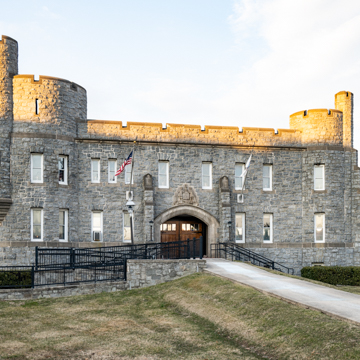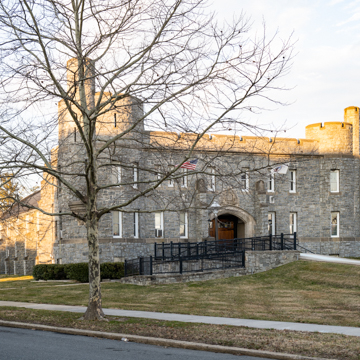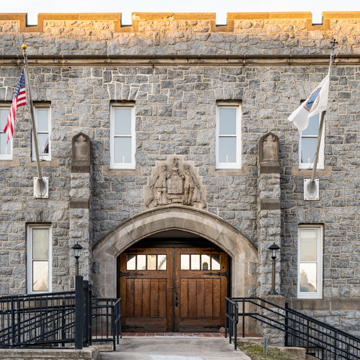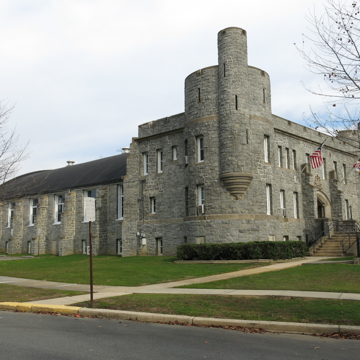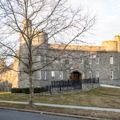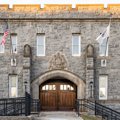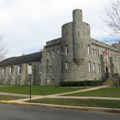Elkton Armory was built, like those in Hyattsville and Bel Air, as part of the expansion and reorganization of the Maryland National Guard in the early twentieth century. Here the architect has not been identified; it is known that a variety of firms designed Maryland’s armories. A granite-faced two-story head house with corner towers and battlements houses offices and meeting rooms, while the drill hall is a one-story structure to the rear with stone buttresses between steel-sash windows and an arched roof. Cecil County’s World War I monument, complete with Vermont marble doughboy statue, was erected in 1921 and moved to the armory’s front lawn after completion of the new courthouse. In keeping with segregationist practices at the time, the names of two Black servicemen were set apart at the end of the list with the label “Colored.”
You are here
ELKTON ARMORY
If SAH Archipedia has been useful to you, please consider supporting it.
SAH Archipedia tells the story of the United States through its buildings, landscapes, and cities. This freely available resource empowers the public with authoritative knowledge that deepens their understanding and appreciation of the built environment. But the Society of Architectural Historians, which created SAH Archipedia with University of Virginia Press, needs your support to maintain the high-caliber research, writing, photography, cartography, editing, design, and programming that make SAH Archipedia a trusted online resource available to all who value the history of place, heritage tourism, and learning.











